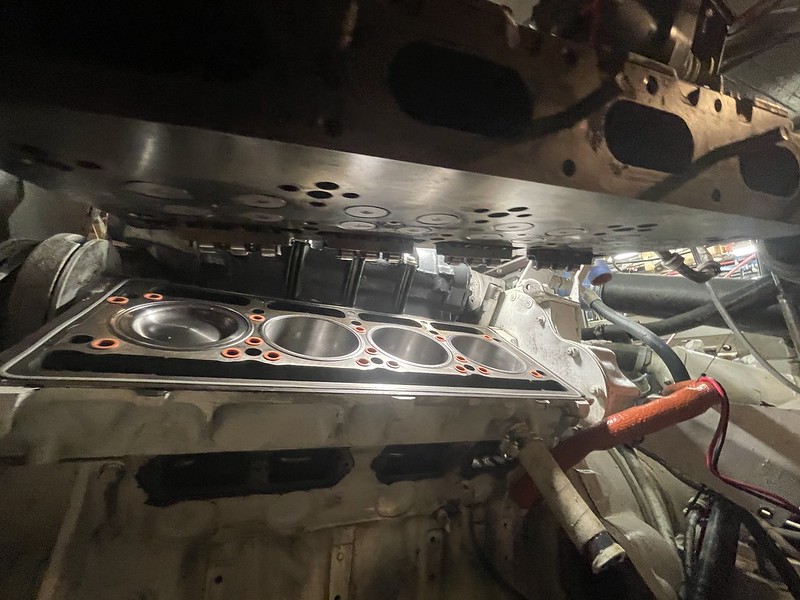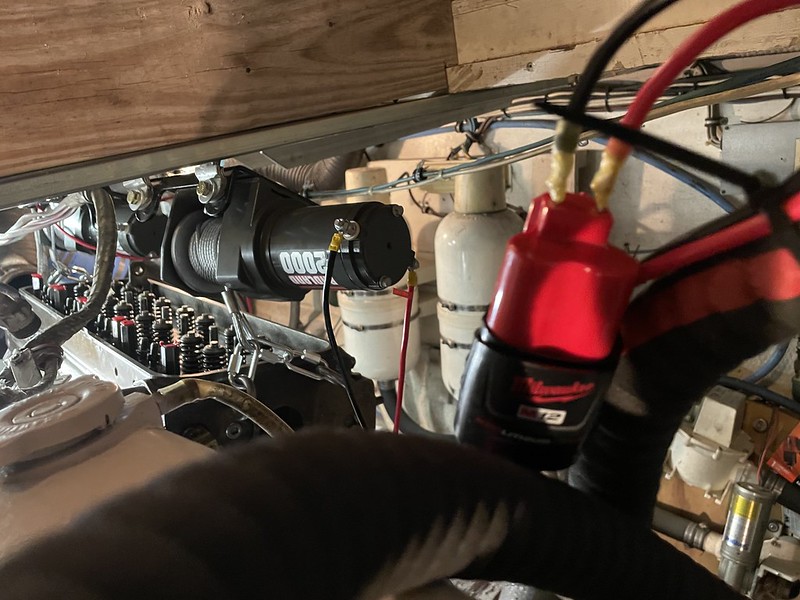Ok, little update. Finally got everything buttoned back up and fired her up Sunday! One small oil leak (gasket mis-positioned on turbo install) and two small raw water leaks which just needed a little more torque on the hose clamps.
She fired right up and purred like a kitten. Not gonna lie, it was a GREAT sound to hear.
Quick video of running during the initial startup.

Some things I learned along the way.
- An inframe rebuild is a MAJOR project. Sooooo many parts/pieces to these engines, and doing the work in a hole leaves a lot to be desired. Total project time on this was approx 1yr for us, but it took 6 months for cylinder liners to arrive. So in reality, it was more like a few weeks for teardown and about 6 months to re-assemble. Keeping in mind this was done on free and long weekends (I live 4.5hrs from boat).
- Organization was KEY!!! All parts got bagged and tagged/labeled with any special instructions listed on the bags.
- Many parts of this project are 1 person, but when doing in-frame it's sooooo helpful to have a second person, if for nothing else to hand you a wrench/tool...etc instead of having to crawl out of the hole find the tool, then crawl back down in.
- I'm guesstimating, without labor, I've got approx $12k in the rebuild. Approx $7k in parts and $5k in misc supplies, tools, gloves, solvents, oils, cleaners...etc. I don't even know how many hours of labor, but def in the 100's. I also did two blower rebuilds with bypass that added approx $2k to the project.
I installed a new blower with bypass valve on the rebuild engine. While everything was down I went ahead and changed the blower on the other engine as well. Both engines got rebuilt injectors, new coolant, oil...etc. The blower bypass mod should remove an 80hp load on the engines at cruise-wot.
Hoping to do the break-in run this coming sunday, still got a few things to button up before we are ready for seatrial. Hopefully everything stays buttoned up and we are back on the water soon!
Special thanks to all here as well as the guys over at boatdiesel.com who really helped me with questions/guidance along the way. Without these two resources (and youtube) there is no way I could have done this project.










